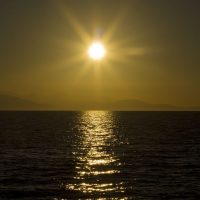The winter solstice will occur at 18:19HST today.

The Sun has reached the most southerly declination it will achieve this year. After today the Sun begins to move north in our skies.
Today will be the shortest day of the year for those of us located in the northern hemisphere.
Today is considered the start of winter for most cultures in the northern hemisphere, or the start of summer for those in the southern hemisphere.
| 2019 Apsides and Seasons | ||||
|---|---|---|---|---|
| Event | Universal Time | Hawaii Standard Time | ||
| Perihelion | Jan 03 | 05:20UT | Jan 02 | 19:20HST |
| Spring Equinox | Mar 20 | 21:58UT | Mar 20 | 11:58HST |
| Summer Solstice | Jun 21 | 15:54UT | Jun 21 | 05:54HST |
| Aphelion | Jul 04 | 22:11UT | Jul 04 | 12:11HST |
| Fall Equinox | Sep 23 | 07:50UT | Sep 22 | 21:50HST |
| Winter Solstice | Dec 22 | 04:19UT | Dec 21 | 18:19HST |
| Data from US Naval Observatory Data Services | ||||

